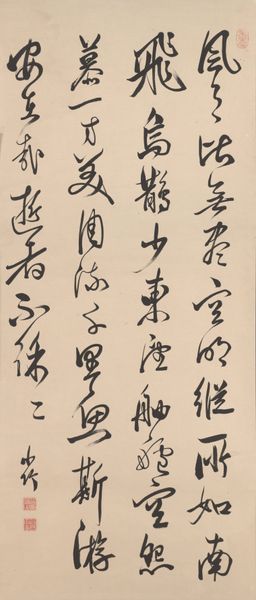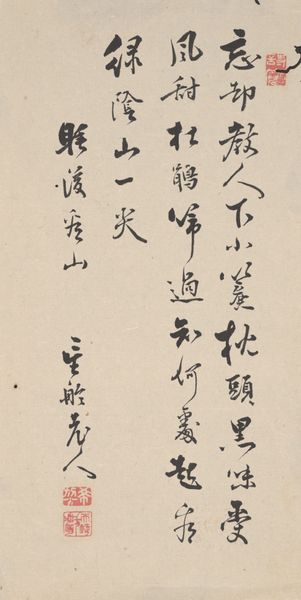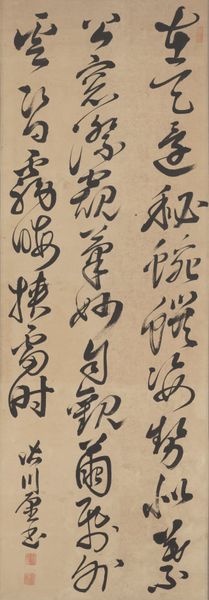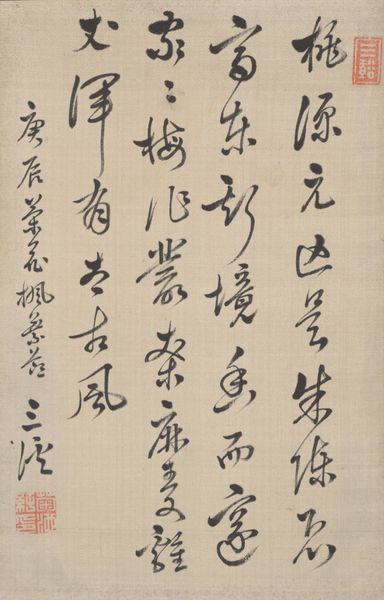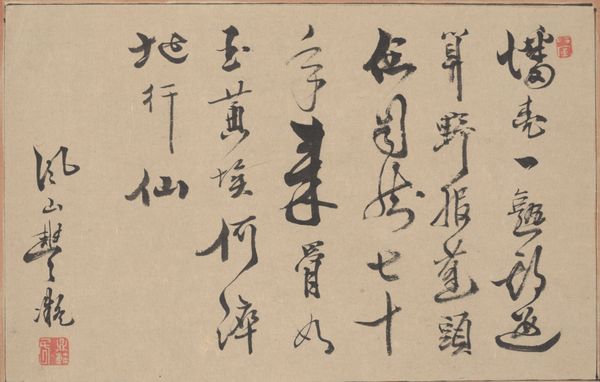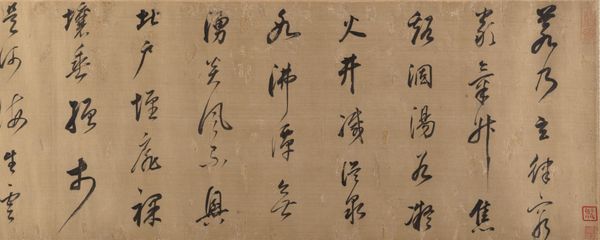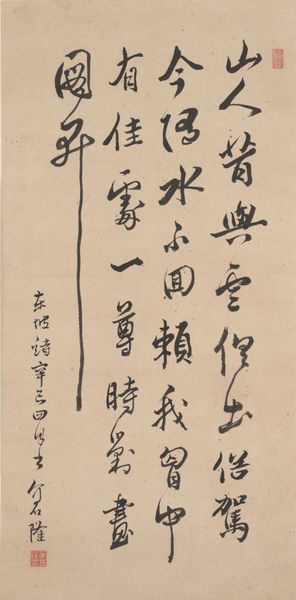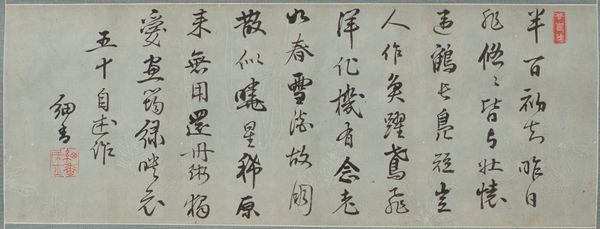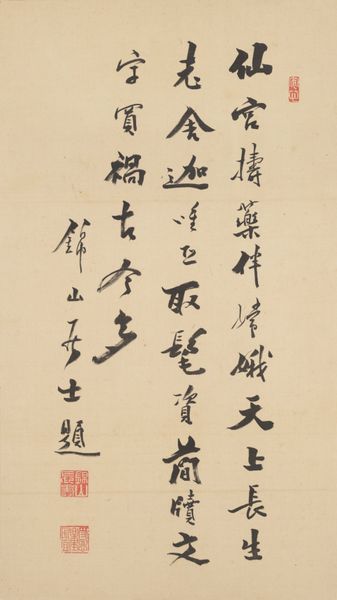
drawing, paper, ink
#
drawing
#
asian-art
#
paper
#
ink
#
calligraphy
Dimensions: 51 × 21 7/8 in. (129.54 × 55.56 cm) (image)72 1/2 × 25 5/16 in. (184.15 × 64.29 cm) (mount, without roller)
Copyright: Public Domain
Editor: This is *Large Poem in Four Columns* by Shinozaki Shochiku, dating back to the mid-19th century. It’s an ink drawing on paper. The flowing calligraphy gives it such a powerful and yet calming effect. How do you read this work? Curator: As a materialist, I am particularly interested in how the materials used and the process of creating this work speaks to the social context of its production and reception. The ink, the paper, the very act of calligraphic writing were deeply embedded in a system of value and cultural production. Editor: In what way? Curator: Consider the paper itself, most likely handmade. What does it say about Shinozaki Shochiku's access to resources and his status? The ink, similarly, represents specific techniques and sources. This piece moves past merely appreciating its aesthetics and lets us consider who had the privilege and opportunity to engage in such skilled artistic creation. Editor: So, you're saying we can analyze the materiality of the piece to understand something about social structures and the economics of art in 19th century Japan? Curator: Exactly! The “poem” exists beyond its aesthetic appeal; it signifies the labor, resources, and cultural capital involved in its making, thus challenging our perception of this work. Do you think it makes you view this drawing differently? Editor: Absolutely. I am now compelled to analyze not only the beauty, but the conditions of artistic production. The interplay between labor and artistry creates a whole new layer to understanding the piece! Curator: Indeed. The materiality allows us to examine class, privilege, and skill inherent in artmaking practices.
Comments
No comments
Be the first to comment and join the conversation on the ultimate creative platform.

